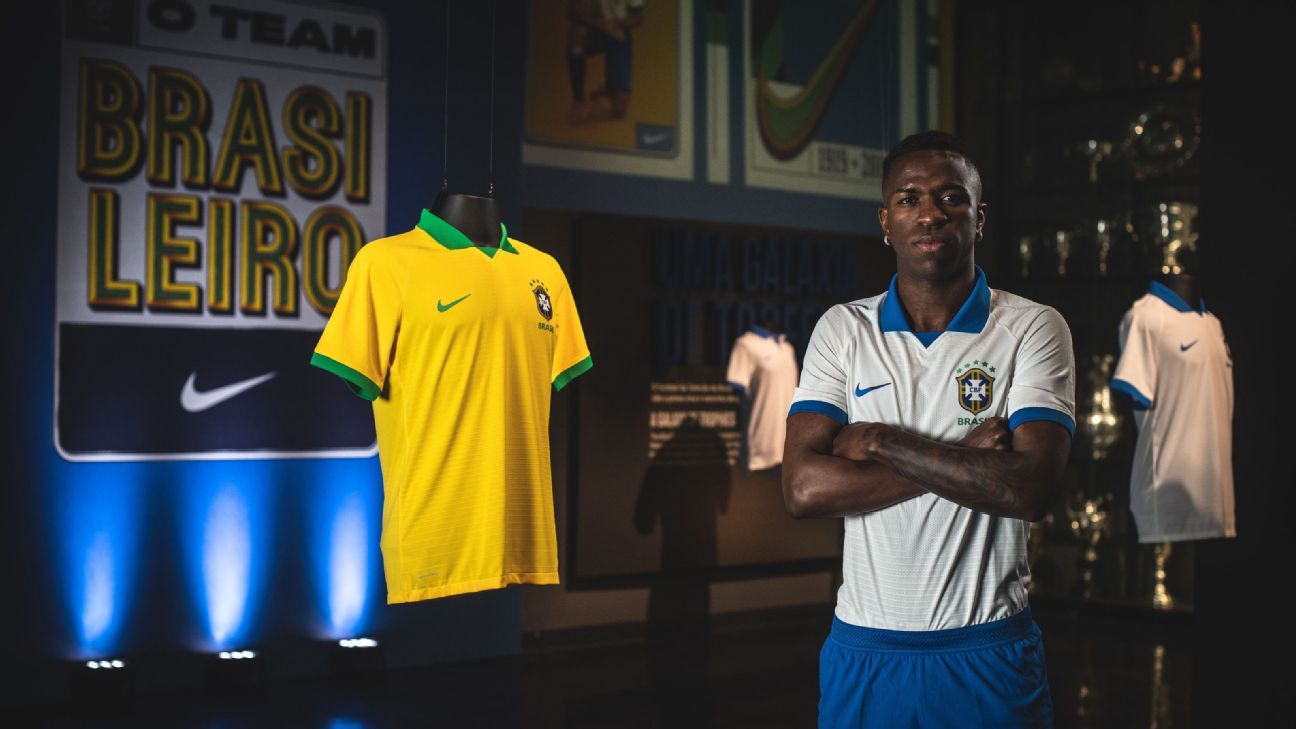


Just under two months from now, Brazil will take the field for the opening game of the Copa America wearing their traditional white shirts.
That might seem like a strange way to end a sentence, but it is true. From their first match in 1914 (against Exeter City) and for almost four decades afterwards, Brazil wore white.
A change was forced by the trauma of losing the 1950 World cup on home ground beaten 2-1 by Uruguay in the decisive game in the giant, newly built Maracana stadium.
A competition was staged to design a new shirt, taking advantage of the colours of the national flag. It was won by a young man called Aldyr Schlee, who passed away last November on the eve of a friendly between Brazil and Uruguay. This was appropriate. From the south of Brazil, Schlee identified with Uruguay every bit as much, and perhaps more, than he did with the land of his birth. And so it was a Uruguay supporter who designed the famous yellow shirt with which Brazil are so well known all over the planet.
To win their first World Cup in 1958 Brazil quickly had to improvise a change shirt. The final was against tournament hosts Sweden, one of the few other teams in the world who wore yellow. The first lap of honour, then, was performed in blue, the colour hurriedly chosen for the occasion. The blue shirt has had an occasional run out ever since. But all the other World Cup wins were in sparkling yellow.
- Pele undergoes kidney stone surgery in Brazil
Even so, there is something refreshing about Brazil returning to white for the 2019 Copa America. It is a recognition that Brazilian football did not begin with Pele, Garrincha and the gang in 1958, a doff of the hat to the pioneers.
It is explicitly a reference to the centenary of the 1919 Copa — the first to be staged in Brazil, the first to be won by Brazil.
That tournament was of extreme importance to the development of the Brazilian game. It came three years before one of the country’s leading writers, Graciliano Ramos, published the view that Brazil had no need of football, and that it would never catch on. At the other end of the country from Rio, where the tournament took place, Ramos had no way of judging the effect of the 1919 Copa on the local population.
First there was the fact that Brazil won. A narrow, extra-time win over Uruguay inspired the great musician Pixinguinha to compose “1-0,” a standard of Brazilian music, in celebration.
It was not only the winners who made an impact. At this time football in Brazil was largely restricted to the elite. A large part of the explanation for Uruguay’s early prowess was the way that the game had moved quickly down the social scale. One of Uruguay’s outstanding players in 1919 was Isabelino Gradin — who had also been the top scorer of the first Copa in 1916. Gradin was of humble birth, and he was black. Rio’s black population watched him, and came to the swift conclusion that if he could do it, so could they. A hundred years later, then, 1919 certainly deserves to be remembered.
“Verás que um filho teu não foge à luta” #oteambrasileiro pic.twitter.com/leoZFR6SWL
— Vinicius Jr
(@viniciusjr) April 9, 2019
And so does the Copa of 1949, the last major tournament that Brazil staged before the construction of the Maracana. That tournament mostly took place nearby, in the stadium of Vasco da Gama, and once more Brazil came out on top. The hosts truly had a magnificent team; although they fell narrowly short, their performances in the 1950 World Cup captured the imagination of the international press — and none more than those of Zizinho, the idol of the young Pele and perhaps the greatest player in the world at the time.
Together with fellow inside forward Jair, Zizinho formed a feared attacking trio with Ademir, the central striker. With 17 goals, Zizinho is the joint top-scorer in the history of the Copa America. Full of sinuous talent and tactical intelligence, his is a name that merits a place in the game’s gallery of greats. And his importance has been acknowledged.
The mascot for this year’s Copa is a capybara, a large South American rodent. Last week the creature was given a name. After a vote on social media, 65 percent chose Zizito. It is a recognition of the glory of Brazil’s footballing past — and a warning of the pressures that the team will be facing in the near future.
The white shirt may be associated with failure in the 1950 World Cup. But as far as the Copa America is concerned, Brazil have a 100 percent home record. And in three of the four occasions that Brazil were hosts (1919, 22 and 49), they won it in white. Nothing less will be tolerated from coach Tite and his men in 2019.
